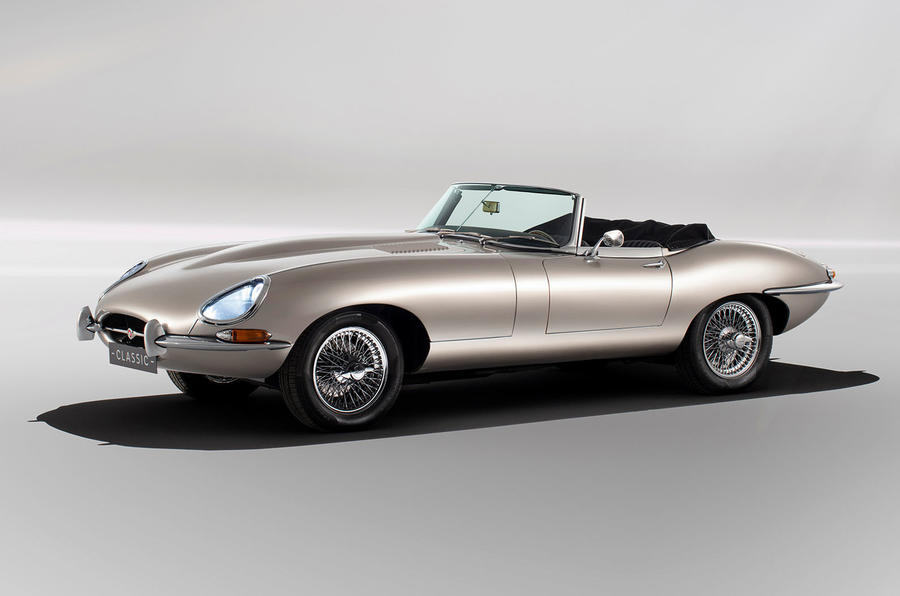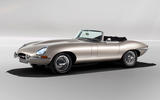This is the electrified version of the E-Type, driven in prototype form but set to be offered by Jaguar Classic alongside the restored 'Reborn' versions of the iconic sports car that it already sells.
The production versions will have some detail differences, but we're told that the concept — experienced briefly during Monterey Car Week in the US — offers a pretty much identical experience.
Intriguingly, the use of an electric powertrain that shares its dimensions with the E-Type's original six-cylinder engine and gearbox means it will ultimately be possible to electrify other cars that were powered by the classic 'XK' engine.
The 40kWh battery pack uses the same modules as the Range Rover P400e plug-in hybrid, but has twice as many of them, as well as a higher energy density. This occupies the space formerly occupied by the engine and drives a 190kW motor that sits where the E-Type's original four-speed gearbox used to, driving the rear wheels through a single-speed reduction gear and the original differential.
The modular unit requires no changes to be made to the E-Type's core structure and Jaguar is even offering buyers the chance to save the original powertrain in case they ever want to swap back. It also means that the electric E-Type can continue to use the same suspension and brake components as the donor car; the total weight of the electric powertrain being less than 300kg, slightly under the mass of the original engine and gearbox.
There have been other changes, of course. Control electronics are located under the boot floor in the space previously occupied by the spare wheel. A charging port sits under the original fuel filling flap, although Jaguar Classic's team say they are considering moving this forward for production versions, with most charging infrastructure designed for plugging cars in at the front.
The prototype also gets a new digital instrument pack, as well as a central touchscreen that gives control of the entertainment system but also allows for various switchable driving modes, including the ability to limit power output — a sensible precaution given the total lack of any traction or stability control and the motor's ability to deliver its peak 331lb ft of torque from a standing start.
Jaguar claims a range of just over 200 miles in optimum conditions and around 150 miles in regular use; the car has done up to 170 miles on a single charge during testing.
As befits the car's likely status as a weekend toy rather than everyday transport, there is no fast-charging ability; this would have required active cooling of the battery pack and therefore an increase in weight, with a 7kW charger translating to a time of around five hours to replenish the pack (and longer from a domestic socket).





















Join the debate
Add your comment
Sacrilege?
Pro:
(1) moving part in an electric motor. Many hundreds in a V-12.
Con:
No sweet and delicious exhaust note in an e-motor... kinda like having sex but orgasm is not allowed
The price is a bit to high
The car looks beautiful, but the price... my God!
I can't help remembering,
what Ed China did with a Maserati when he dropped an electric power unit in. The cost was nothing like as exorbitant.
I would want a new rolling chassis with aluminium panels along with the battery power for the price.